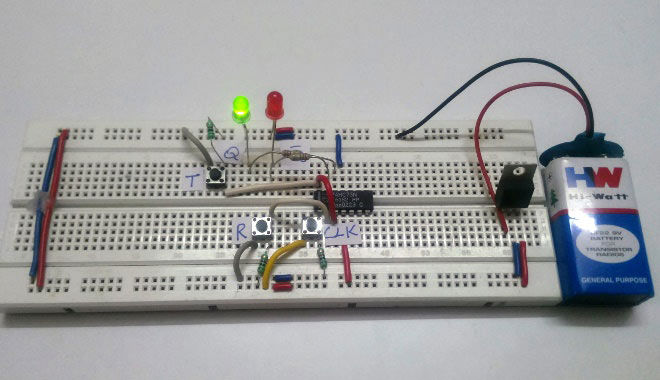What are Flip Flops?
Flip Flops (Sequential Logic)
What are Flip Flops?
Flip-flops are the fundamental component of sequential reasoning. They essentially store a single binary state integer. There are several flip-flops available that vary in the manner the state is used.
Since a flip-flop stores a binary digit it must, by definition, have 2 states. Furthermore, it is bistable, which means it is stable in each state: when it is put in a specific state, it will stay in that state until something causes it to change to the other state.
Classification of Sequential Logic
As standard logic gates are the building blocks of combinational circuits, bistable latches and flip-flops are the basic building blocks of sequential logic circuits. Sequential logic circuits can be constructed to produce either simple edge-triggered flip-flops or more complex sequential circuits such as storage registers, shift registers, memory devices or counters. Either way sequential logic circuits can be divided into the following three main categories:
1. Event Driven – Asynchronous circuits that change state immediately when enabled.
2. Clock Driven – Synchronous circuits that are synchronized to a specific clock signal.
3. Pulse Driven – Combination of the two that responds to triggering pulses.
R-S Flip Flop
This Flip-Flop has two inputs that change its state: Reset and Set.
When R goes low, Q goes low and /Q goes high.
When S goes low, Q goes high and /Q goes low.
When both R and S are high the Flip-Flop is stable and does not change.
R and S cannot be both low at the same time.
Applications of Flip Flops
Flip flops will find their use in many of the fields in digital electronics. Flip flops are the main components of sequential circuits. Particularly, edge triggered flip flops are very resourceful devices that can be used in a wide range of applications like storing binary data, counter, transferring binary data from one location to another etc. Some of the most common applications of flip – flops are
- Counters
- Registers
- Frequency Divider circuits
- Data transfer
All these applications make use of the flip flop’s clocked operation. Almost all of them come under the category of sequential circuits.

